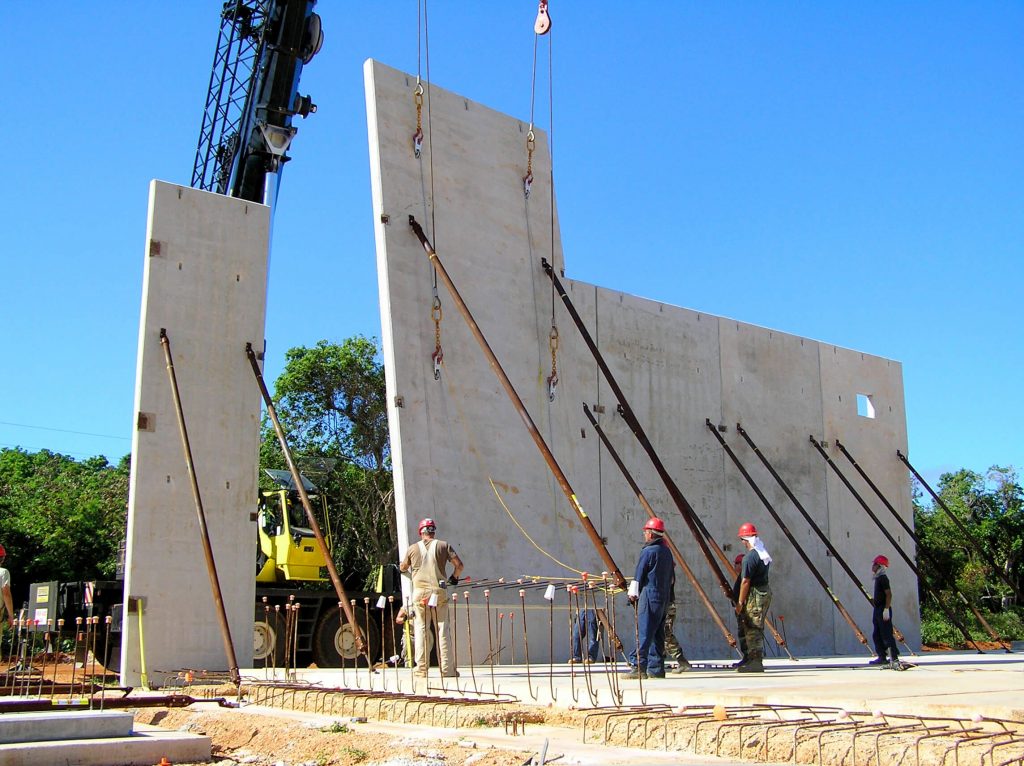Modulus of elasticity (MOE) in concrete refers to the measurement of resistance a concrete structure has to deform or sway. That is, it measures the stiffness of the concrete. This measurement is used for high rise buildings, bridge piers, and other structural applications where the stiffness of the concrete is of essential importance.
Explore 12 Futuristic Technology Trends Solving Concrete's Biggest Challenges.
The Wanda Vista Towers building project located in Chicago is a perfect example of where high MOE requirements come into play. Upon completion, this skyscraper will be 1,140 feet tall with 95 floors and the core of the structure – elevators, emergency stairs and utilities will all be encased in concrete walls. As such, having a high level of stiffness in the concrete mixture, or high MOE, is crucial in minimizing building sway due to wind.
In the US, the MOE value is measured in pounds per square inch (psi) or thousands of pounds per square inch (ksi). It is a graphed slope of a cylinders length change when up to 40 per cent of compression is added to the cylinder. An example is as follows: If a 7,000 ksi MOE concrete shortens a 1-inch sample by 0.001 inches when a load of 7,000 is added, then a 3,500 ksi MOE concrete would shorten twice as much with a 7,000 compression imposition. For a super-tall building such as with the Wanda Vista Towers Skyscraper, these differences could cause dramatic differences in the amount of wind sway the building experiences.
As concrete is a composition of various materials, all ingredients affect a structures MOE and so the task of creating a mix which meets the specified requirements involves researching materials used and testing MOE values of the mixtures. This usually takes place a year before construction begins in a laboratory setting.
As stated by Kevin MacDonald, the president of Beton Consulting Engineers, Mendota Heights, Minnesota, the large aggregate or ingredient in concrete is the first point of consideration as its MOE is usually higher than the MOE of cement paste – the binding material of the aggregates. For instance, limestone, though it is plentiful around the country, would be considered too soft to achieve a high MOE. Further, although Iron aggregate would have the required strength it is too dense and heavy and so structures would require to be significantly increased in order to carry the load. Instead, “trap rock”, basalt or other fine-grained igneous rock is usually of choice as its MOE can be as high as 17,000 to 18,000 ksi.
The MOE of cement paste too is all-important. That is, cement paste must be present in an amount that best achieves a proper bond to the aggregates. Along with compressive strength of the concrete, the proper water-cement ratio is an essential element as well.
Other ingredients that are used in concrete mixtures too have an impact of the overall MOE value. Ingredients such as fly-ash, silica fume, slag and admixtures which include high range water reducers (super plasticizers), viscosity modifying, and shrinkage compensation admixtures all play a vital role.
In order to determine what the MOE is for concrete, six by 12 or four by eight inch concrete cylinders are cast and then cured underwater in a curing tank. They are then placed in the same machine used to determine compressive strength. The cylindrical sample has force imposed to compress it which in turn changes the length of the sample causing a bulge at its diameter. This change in width and length is measured and included in the formula for the MOE along with the force that is applied.
In order to achieve the best high MOE concrete, one wants the mix to have the least space as possible between the large and small aggregates. One means of ensuring this is with the “particle packing” approach, where you start with the largest aggregate size, moving to the next size to fill void spaces between the larger stones and so forth. The goal is to use the least amount of cement possible to coat and bind the aggregates together.
Ultimately, the key benefit for high MOE concrete is that buildings will sway less in high wind situations.
Source: http://www.forconstructionpros.com/article/12213303/designing-high-modulus-of-elasticity-mixes








